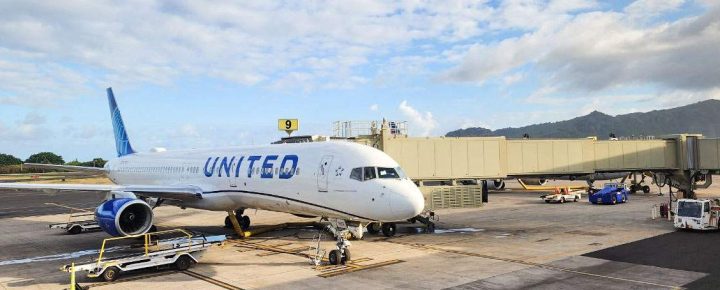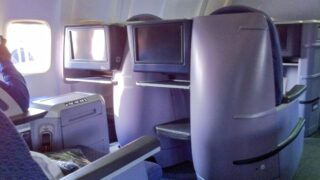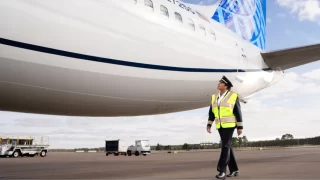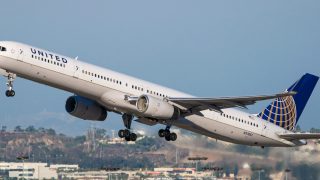In a decidedly unsettling incident for passengers and their families, United Airlines flight 1685, a Boeing 757-200 traveling from Lihue, Hawaii, to Denver, Colorado, was forced to make an emergency diversion to Honolulu after experiencing a hydraulic failure mid-flight.
The aircraft, registered as N12114, was en route at an altitude of FL350 (35,000 feet), approximately 490 nautical miles north-northeast of Honolulu, when the crew decided to divert. The flight landed safely on Honolulu’s runway 08R about 2 hours and 50 minutes after departure.
This flight is somewhat closer to home, being one that Beat of Hawaii editors use. See our recent United Airlines Hawaii review of that flight.
A series of unfortunate events on the 29-year-old aircraft.
The flight initially left Lihue with a significant delay due to an unrelated issue—a failed fan in the cargo area that required repairs. After finally heading off to Denver, the passengers had little time to relax before a new problem arose.
Approximately one to two hours into the flight, the captain informed the passengers that one of the aircraft’s hydraulic systems had failed, necessitating an immediate diversion to Honolulu, the nearest suitable airport, amid an ocean with no diversion options.
According to the report, the landing itself was not without complications. Due to the hydraulic failure, passengers were told that the aircraft could not utilize nose-wheel steering, which may have resulted in a significant delay in its taxiing to the gate. That part of the ordeal lasted nearly an hour after landing, further adding to passenger stress.
Hawaii diversion aftermath and passenger experience.
Upon arrival in Honolulu, the flight was canceled. Passengers were presumably accommodated by United Airlines and were flown to Denver the following day. The aircraft remained grounded in Honolulu for 43 hours before being positioned back to Denver. As of the latest report, the plane has not yet returned to regular revenue service.
This incident reminded us of the last Hawaii hydraulic event we were aware of. It involved a Hawaiian Airlines interisland flight and resulted in a diversion. In that case, the aircraft’s landing gear may have been compromised, creating smoke and further concerns.
Airline hydraulic failures on transpacific flights.
Modern airliners like the Boeing 757 are equipped with multiple hydraulic systems—typically three—that control essential functions including the landing gear, braking, and steering. These systems are designed with redundancy, so that if one system fails such as in this case, the others can take over to maintain the plane’s functionality.
However, when a hydraulic failure occurs mid-flight, particularly over vast oceanic expanses like the Pacific, the situation is somewhat more complex. With limited options for diversionary airports, the crew must more carefully assess the situation to determine the safest course of action. The availability of suitable airports for diversion, such as a return to Honolulu in this recent United incident, becomes a critical factor.
While these systems provide a high degree of safety even during a failure, the risks and operational difficulties underscore the importance of quick, decisive action by airlines’ highly qualified flight crews.
Call for passenger accounts from UA 1685.
We would love to hear from you if you were on board. Passenger insights provide valuable context and support for others.
Hat Tip: Aviation Herald.
Get Breaking Hawaii Travel News







I just want to Thank the pilots who have been subjected to all of these plane failures over the last year and commend them on staying calm and making smart decisions.
I was a passenger on this flight. Please feel free to contact me.
It is always at the pilot’s discretion as to how he wants to fly the plane. But in essence, his move was in line with what would be prescribed by ETOPS standards. No plane can leave for an ETOPS mission with any deferred maintenance items. While this happened in the air, it was serious enough to land on the ground as soon as possible. That plane had a maintenance issue and it could have been the “final straw” for the pilot who already went through a delay in departure due to other issues at Lihue.
This is the 2nd hydraulic failure I’ve heard of involving a flight to or from Hawaii and it makes me a bit nervous about my upcoming trip to Maui.
At least this makes me appreciate the complexity of flying over the Pacific. Kudos to the crew for managing the situation well and ensuring safety!
The 757 has been around for a while now. It also can be a very fast aircraft. We had a flight from the Big Island (Kona) into SFO in less than 3 hours, we probably had a tailwind. I’ve always liked that aircraft.
An indirect cause of this, most likely, is Boeing’s failure to update the 757 as a cost-savings measure, so airlines have had to fly the model past the normal lifespan of such aircraft. Oceanic use increases the risk because of the exposure to saltwater that can corrode aircraft parts and the fuselage itself —as we saw on an older 737 incident in the 1980s.
To protect passenger safety, Hawaii may want to consider implementing a law placing a cap on the maximum age of aircraft used on its shores to encourage airlines to use more-modern options sooner.
There’s a huge difference between the lifespan of the aircraft design and the age of individual components, which are maintained at all times.
Hydraulic failures occur even on relatively new aircraft. Correlation and causation are two different matters.